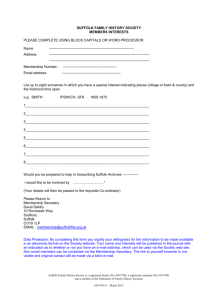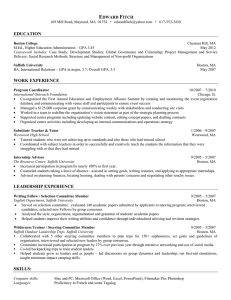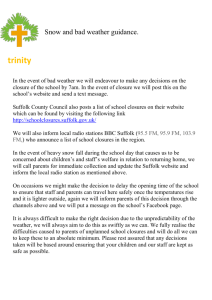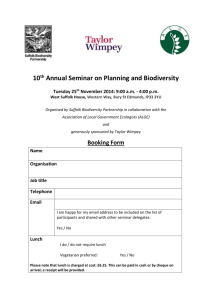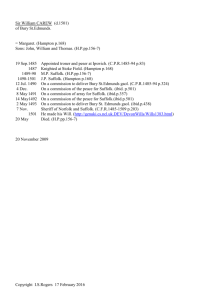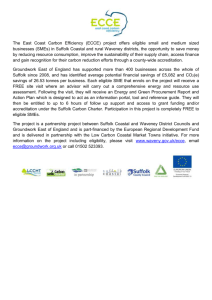Document 13050173
advertisement
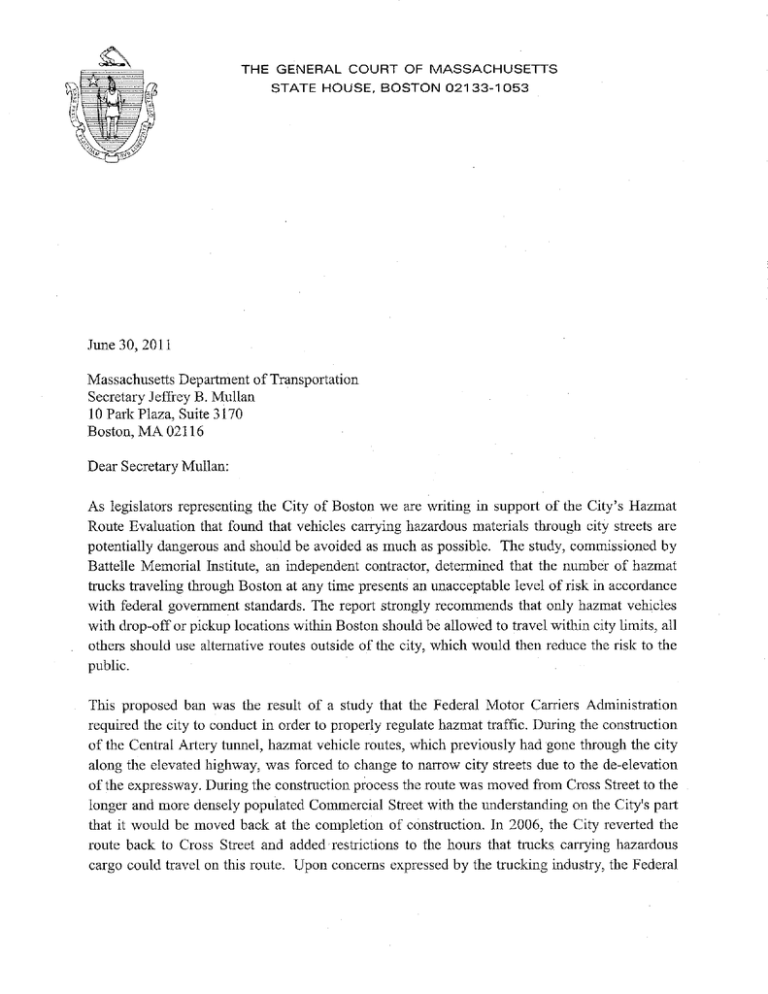
THE GENERAL COURT OF MASSACHUSETTS STATE HOUSE, BOSTON 02133-1053 June 30, 2011 Massachusetts Department of Transportation Secretary Jeffrey B. Mullan 10 Park Plaza, Suite 3170 Boston, MA 02116 Dear Secretary Mullan: As legislators representing the City of Boston we are writing in support of the City's Hazmat Route Evaluation that found that vehicles carrying hazardous materials through city streets are potentially dangerous and should be avoided as much as possible. The study, commissioned by Battelle Memorial Institute, an independent contractor, determined that the number of hazmat trucks traveling through Boston at any time presents an unacceptable level of risk in accordance with federal government standards. The report strongly recommends that only hazmat vehicles with drop-off or pickup locations within Boston should be allowed to travel within city limits, all others should use alternative routes outside of the city, which would then reduce the risk to the public. This proposed ban was the result of a study that the Federal Motor Carriers Administration required the city to conduct in order to properly regulate hazmat traffic. During the construction of the Central Artery tunnel, hazmat vehicle routes, which previously had gone through the city along the elevated highway, was forced to change to narrow city streets due to the de-elevation of the expressway. During the construction process the route was moved from Cross Street to the longer and more densely populated Commercial Street with the understanding on the City's part that it would be moved back at the completion of construction. In 2006, the City reverted the route back to Cross Street and added restrictions to the hours that trucks carrying hazardous cargo could travel on this route. Upon concerns expressed by the trucking industry, the Federal Motor Carriers Administration requested that the City of Boston perform an extensive review of hazardous cargo transport in accordance with a process laid out by the federal government. Battelle Memorial Institute evaluated a number of variables, with the major differentiating variable being the risk related to the potential exposure of populations along a route as a result of a hazmat spill. The risk was dramatically higher in narrow city streets and found that these trucks traveling through Boston are six times more dangerous than if they were to travel along alternative routes. Hazmat trucks driving through narrow streets, heavily trafficked by pedestrians, is inherently dangerous. Literally millions of people visit Boston every year, and they use streets that are heavily trafficked by hazmat vehicles. Residents who drive and use these streets on a frequent basis should not have to endure an unacceptable potential amount of risk. We urge the Massachusetts Department of Transportation to thoroughly review the study and endorse its findings. Sincerely, Anthony Petruccelli 1st Suffolk & Middlesex • Sonia Chang-Diaz 2nd Suilolk 0\ 2 nd en A. Tolman / Suffolk & Middlese(. /:f~0 Jbhn Hart / st 1 Suffolk ~:~ ~s~ SOM"': ';n772-1i<"'Y 14th Suffolk Chief of Staff Office of Senator Mike Rush Y A."O,":ri=lb Miko miliwh" a.. . ' ( ~Uhing dory ~G.Honan 9t Suffolk 17 th Suffolk ~ d ~~ f. (j:.JI~_ ~ ):J(~-Martin J. Walsh 13 th Eugene L. O'Flaherty 2nd Suffolk /' ~Oha' th 15 Su olk Martha Walz 8th Suffolk a- . . Z abeth A. Malia 11th Suffolk Linda Dorcena Forry 12th Suffolk ~~ NIck Collins Carlo Basile 15t Suffolk W ';. ........-,/,"!-"" Edward F. Coppinger ~l~SUffO~ Russell E. Holmes 6th Suffolk
